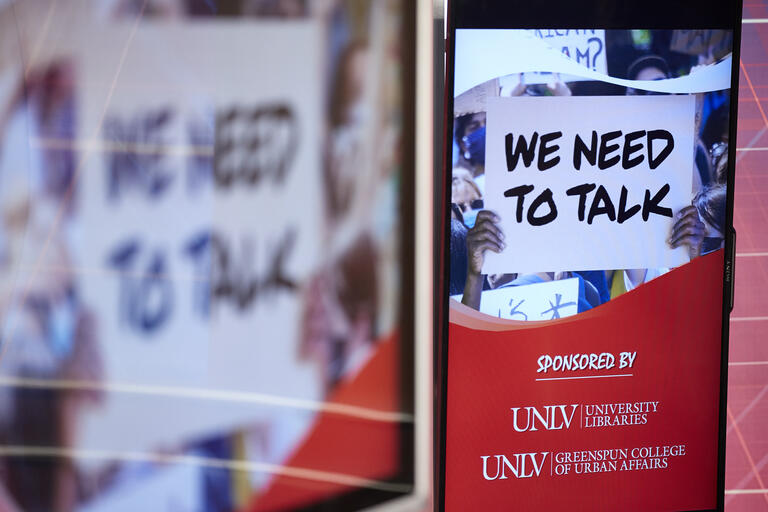“I’m from the Eastside.”
Growing up, I was often asked, “Where are you from?” To the average person, this may seem like an innocent question, but to me it was a moment requiring justification.
Because of the way I look, people were never satisfied with, “I’m from here.” What they were really asking was, “You look different from us, where are you really from?” Eventually, I developed a passive-aggressive response in which I reluctantly disclosed my parents’ countries of origin, as this seemed to be the only response that would suffice, even though my reply never actually addressed where I was born.
As I got older, my reply evolved: “I’m from the Eastside.” This response also garnered some some weird looks but it was also more accurate.
The Eastside is the area of the valley from east of Las Vegas Boulevard to the neighborhoods that run parallel to Bonanza, right up to where the city kisses Sunrise Mountain. This is the hub of the Latinx community in Las Vegas, and to many, the first step toward the American Dream. You can spend all day in this part of Las Vegas without ever needing to speak a word of English. As a teenager, I walked those busy streets, visited local businesses, and attended school. Even though I live in a different part of town, it still feels like home when I visit.
Growing up, I never realized the difference between the Eastside and the rest of Las Vegas; the Eastside was my reality. Only when I’d get weird looks after saying, “I’m from the Eastside,” did I become aware of the negative views that people not from the neighborhood had about my birthplace. But there, I witnessed firsthand the success stories that those from this often-forgotten neighborhood can produce against all odds.
Flash forward to my career as a UNLV graduate student, a status I am privileged to have attained as a Latino male from an “at-risk” neighborhood. As I began my first semester, I learned that the University Libraries were getting ready to launch the Latinx Voices of Southern Nevada Project, an oral history project with the goal of recording the history of my community, told from our perspective. Through this project, I was able to hear and record the stories of dozens of Latinx people from all walks of life. Some have been transplants from other U.S. states or other countries, but each one sharing their own unique experiences that broaden my definition of the Latinx experience in Las Vegas and across the country as a whole.
The interviews that really hit home were from people who grew up on the same streets as I did. Speaking to these individuals, I learned history that is not included in history textbooks. I have heard about issues that plagued the Eastside decades ago, that are still present in the area today. But most importantly, these individuals shared stories of their hopes and accomplishments despite the limited resources directed to the Eastside.
The reputation of the Eastside does not have to be and should not be a negative one. Projects such as Latinx Voices of Southern Nevada can change the established narrative surrounding our neighborhoods. Through these stories, the next generation of Latinx youth will know that their neighborhoods are capable of producing business people, artists, educators, politicians, and activists. The possibilities are genuinely endless.
In the Eastside, a person can walk and never have to speak English, but the Eastside is more than the immigrant hub. The fabric that holds the community together and continues to allow this city to thrive lies in the hardworking individuals who strive to make a better future for themselves, their children, and their community every day. This city rests on the shoulders of the people who helped build and maintain it. This project will help ensure this strongest pillar, the one that lies east of the Stratosphere, where the sun rises, is never forgotten.
Our rich history, our diverse culture, and our success are just a few of the reasons we should tell people with pride, “I’m from the Eastside.”


